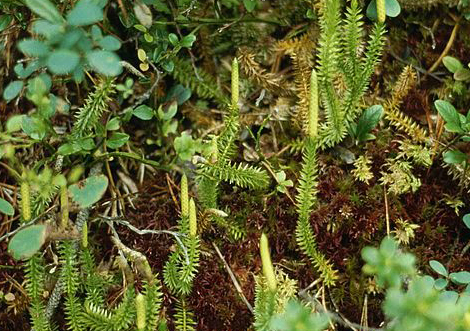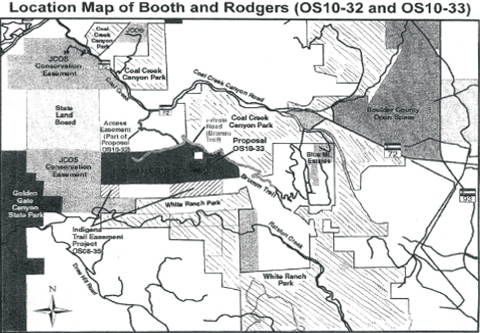A Harvest for the Holly Days
|
That holiday tradition of “decking the halls” is a long one still well practiced today. Seeing our homes and streets festooned with greenery, we might think little has changed from those nostalgic Victorian Christmases we emulate. Gathering decorative greens, however, is a rite best practiced in places where sustained harvests are possible. How well have familiar—and some not so familiar—holiday plants withstood the pressures of our seasonal festivities? Taking the old songs seriously, we might observe a notable lack of “boughs of holly” in our local decorations. I’ve seen quite a few Christmases, and I’ve yet to see more than a small twig of actual holly at a time. In the milder climates of England and southern Europe, where it is native, holly (Ilex aquifolium) grows into a tree some 70 feet tall, and it is perhaps still feasible to harvest entire boughs for the mantelpiece. According to one study, regeneration of holly trees is not dependent on the seeds eaten by birds, which are deposited under trees in great numbers, because seedlings cannot survive the deep shade and high competition there. Most successful young trees are found in well-lit patches where they are safe from grazing animals. Thus, cows may hold a key to holly’s long-term survival. Gardeners hold another: Many species of holly are also cultivated in milder parts of the U.S. Ground pines, among my favorite plants, were once used to make wreaths—and may still be in lusher northern regions, such as Scandinavia. I think that most of us were born too late to see such abundance of this obscure plant in the U.S. You’ll find no red or white berries on this primitive plant—only spores. Other than decorative uses, those spores seem to be the most useful feature. They have been used for baby powder, to stop bleeding, and for flash powder for early photography. Thus the reproductive effort of these plants once literally went up in smoke Ground pines, also known as clubmosses, have had their day, and that day ended more than 300 million years ago. Thanks to the Denver Museum of Nature and Science, we can imagine what these ancient trees of the coal age may have looked like. These plants invented trees—and forests! Lepidodendron, the ‘scale-tree’ as one example, was more than 100 feet tall, and grew in dense forests in the equatorial swamps then prevalent across North America and Europe. They, too, eventually went up in smoke: the vast coal deposits these prehistoric forests formed have kept entire countries warm for decades. Now those ancient giants are gone, and only about 450 species of their lowly relatives survive. Most survivors belong to the genus Lycopodium, or ‘wolf’s foot’ to Greek enthusiasts. We have few species of Lycopodium in Colorado. Most abundant, though hardly common, is the unusual Lycopodium annotinum, or stiff clubmoss, growing on the West Slope in small patches. This species occurs from Greenland to Alaska, where it is found in mature forests, especially those not disturbed by logging for many decades, and is occasionally eaten by moose. It is ranked S4, “apparently secure”, in Colorado; very secure in much of Canada. Another species, L. alpinum, is “critically imperiled” in Colorado and Newfoundland, but rated apparently secure in the Yukon, British Columbia, and Alberta. Are the remaining clubmosses on the way to extinction? If so, it may be that we have helped them down that road a bit. In moist forests of turn-of-thecentury New England, ground pines were harvested in great volume for wreath material and other halldecking. As a child in the northeast, I remember these wonderful plants but never found them in great abundance. About six inches tall at most, spreading outward in patches under the trees, these plants do resemble miniature pine trees. As with most “useless” plants of the forest floor, they are rarely discussed in forestry studies and rarely thrive in managed forests and tree plantations. In New York today, lycopods are protected on public lands, as they all, as a group, are considered to be declining and vulnerable to exploitation, in part because they regenerate very slowly after being harvested. Commercial collecting has made some species rare; the L. complanatum I remember is now considered “critically imperiled” in New York State, but L. obscurum remains secure there. [Explore the status of species of Lycopodium at NatureServe.org.] Our wreaths and boughs today usually substitute easily gathered pine, spruce, and fir branches for these older plants. Some of us may be able to harvest boughs from our own backyards; most of us probably cannot. A few commercial collecting permits are offered in our nearby national forests; one year the Arapahoe-Roosevelt Forest sold commercial permits for about 8 tons of boughs at $50 per ton. (If you have a permit to cut a Christmas tree, you are allowed to pick up a few boughs for personal use.) Decorative boughs for wreaths and garlands are harvested from private lands in Colorado as well. Some coniferous decorations offered for holiday sale here and elsewhere in the U.S. are imported from the Pacific Northwest, where trees are larger and grow more quickly. In fiscal year 2010 on the Okanogan and Wenatchee National Forests in Washington State, more than 60,000 pounds of conifer limbs and boughs were harvested, not counting the bushels of cones and other “foliage.” Perhaps some of this year’s harvest—regional or imported—will end up brightening your own front door. Copyright © 2013 Sally L. White |







